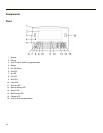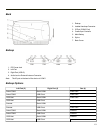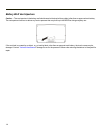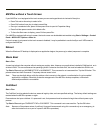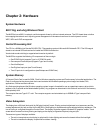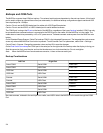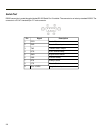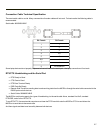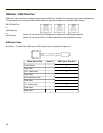
Chapter 2: Hardware
System Hardware
802.11b/g and a/b/g Wireless Client
The MX3Plus has a 802.11x network card that supports diversity with two internal antennas. The CPU board does not allow
hot swapping the network card. Adjusting power management on the network card is set to static dynamic control.
WEP, WPA and LEAP are supported.
Central Processing Unit
The CPU is a 400MHz Intel Xscale PXA255 CPU. The operating system is Microsoft® Windows® CE 5. The OS image is
stored on an internal SD flash card and is loaded into DRAM for execution.
Xscale turbo mode switching is supported and turned on by default.
The MX3Plus supports the following I/O components of the core logic:
l One PCMCIA slot (supports Type I or II PCMCIA cards).
l One compact Flash card port (supports Type I and II cards).
l One InfraRed port.
l One Digitizer Input port (see Touch Screen).
l Two I/O ports in six configurations (see Endcaps and COM Ports).
System Memory
A Compact Flash Card is used for ROM, Flash for Windows operating system and Flash memory for bundled applications. The
Flash is configured as the primary boot device and contains the Windows operating system image, boot loader, OAL,
applications, utilities and device drivers.
Any flash remaining beyond the Windows operating system image is formatted for use as a persistent memory drive (which
appears in My Computer as the folder labeled System). Any programs or data stored in this folder will not be lost if the memory
backup battery fails.
The computer has one Type II CF+ slot. The computer supports and auto detects up to 256MB of Type I compact flash
memory.
Video Subsystem
The display has a 640 pixel (horizontal) by 240 pixel (vertical) format. Display contrast adjustment is not necessary and the
contrast adjustment key has no effect on the MX3Plus. Backlighting is available and can be adjusted with key sequences. The
turn-off timing is configured through the Control Panel. The display controller supports Windows CE graphics modes. Touch
screen allows mouse functions (pointing and taping on the display or Signature Capture) using a stylus.
There are two types of displays available:
l The active transmissive color display is optimized for indoor lighting and cannot be viewed without the backlight.
l The active transflective display is optimized for outdoor viewing.
2-1






